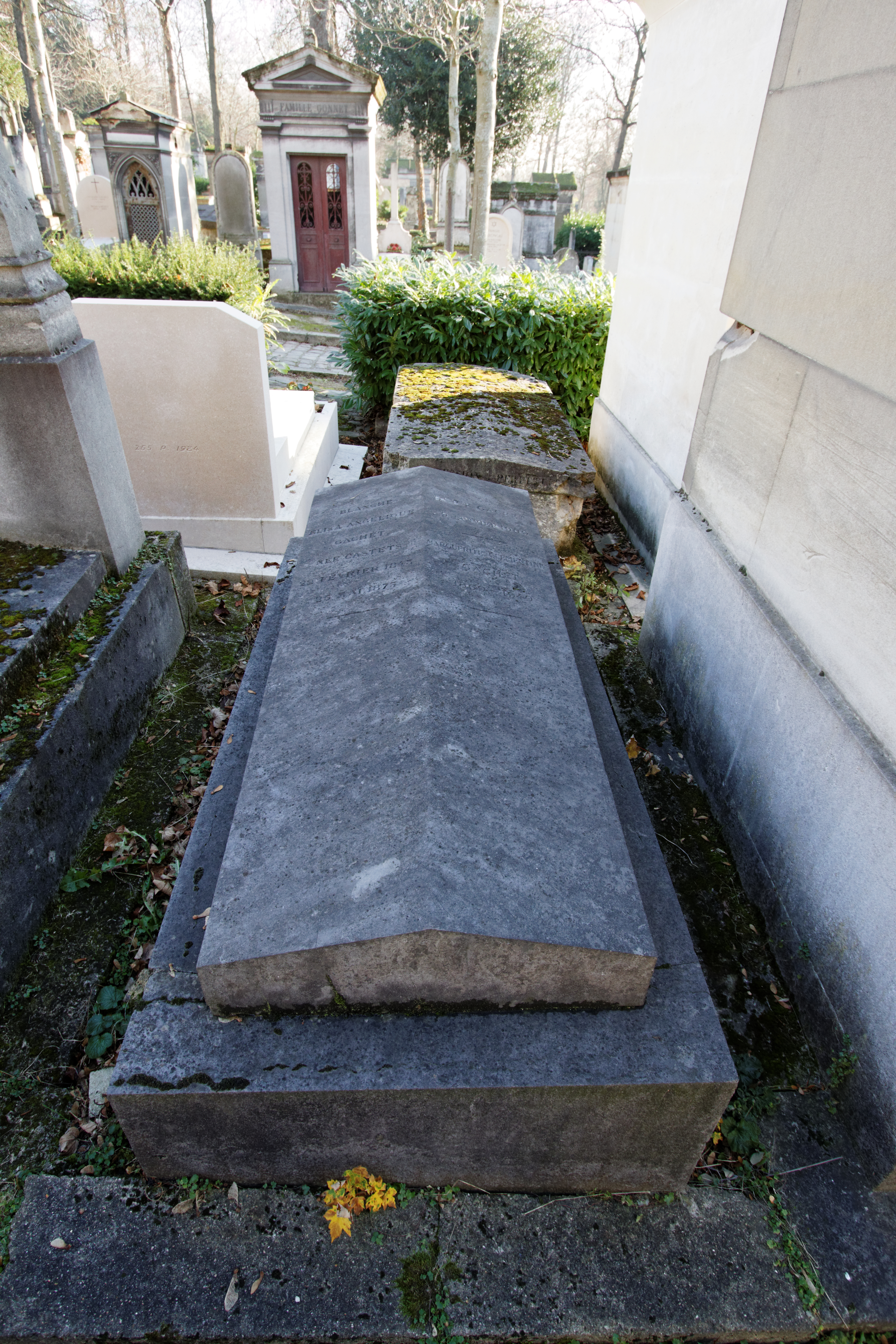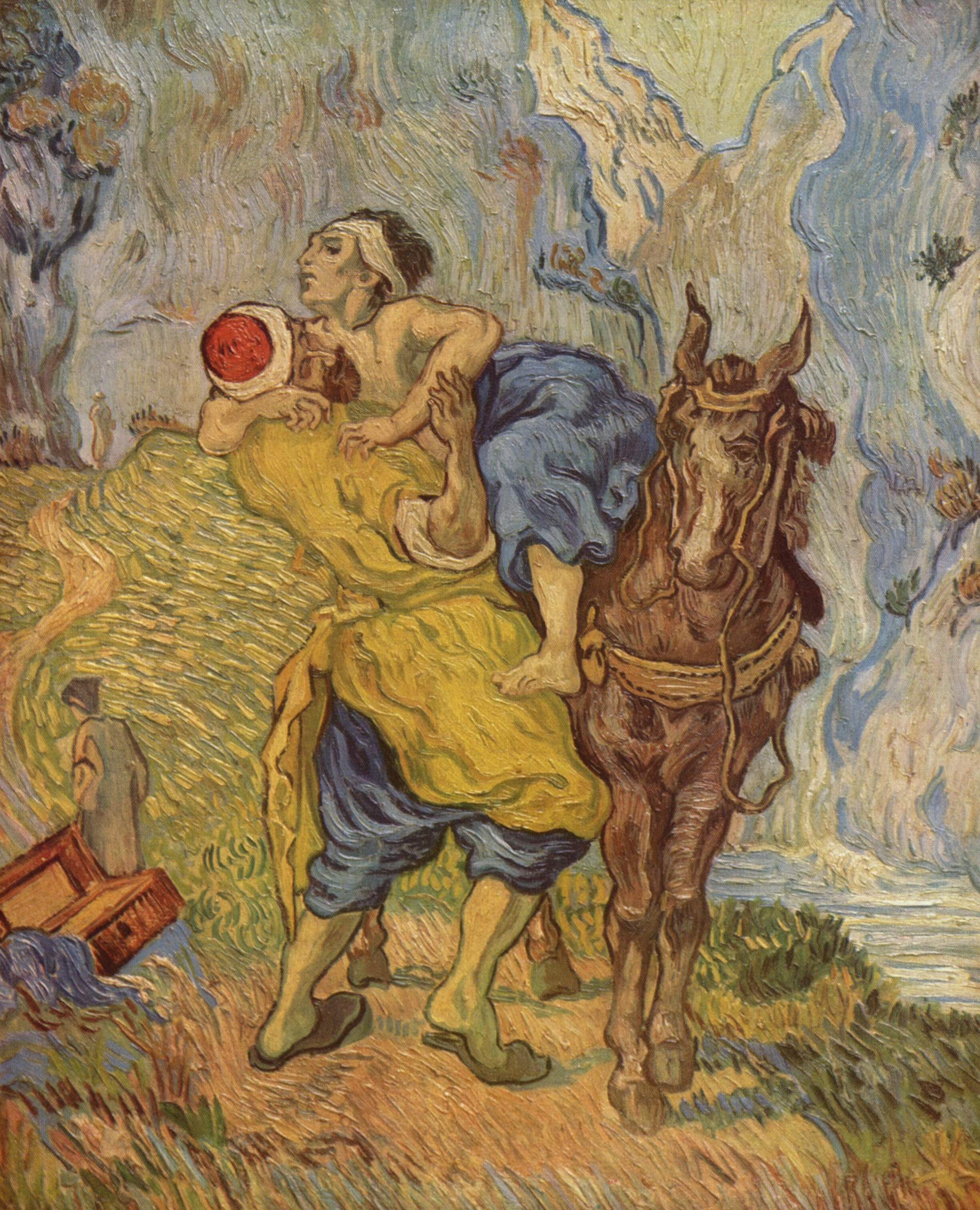|
Auberge Ravoux
The Auberge Ravoux is a French historic landmark located in the heart of the village of Auvers-sur-Oise. It is known as the House of Van Gogh (''Maison de Van Gogh'') because the Dutch painter Vincent van Gogh spent the last 70 days of his life as a lodger at the auberge. During his stay at Auvers, Van Gogh created more than 80 paintings and 64 sketches before shooting himself in the chest on 27 July 1890 and dying two days later on 29 July 1890. The auberge (inn) has been restored as a museum and tourist attraction. The room where Van Gogh lived and died has been restored and can be viewed by the public. Early history (1876–1889) The auberge was built in the mid-nineteenth century as a family home on the main road leading to Pontoise. Various parts of earlier buildings were incorporated into the auberge – including an entire eighteenth-century wall. The auberge was ideally situated in front of the Town Hall. The daughter of Mr Levert, the original owner, put the centr ... [...More Info...] [...Related Items...] OR: [Wikipedia] [Google] [Baidu] |
Auberge Ravoux
The Auberge Ravoux is a French historic landmark located in the heart of the village of Auvers-sur-Oise. It is known as the House of Van Gogh (''Maison de Van Gogh'') because the Dutch painter Vincent van Gogh spent the last 70 days of his life as a lodger at the auberge. During his stay at Auvers, Van Gogh created more than 80 paintings and 64 sketches before shooting himself in the chest on 27 July 1890 and dying two days later on 29 July 1890. The auberge (inn) has been restored as a museum and tourist attraction. The room where Van Gogh lived and died has been restored and can be viewed by the public. Early history (1876–1889) The auberge was built in the mid-nineteenth century as a family home on the main road leading to Pontoise. Various parts of earlier buildings were incorporated into the auberge – including an entire eighteenth-century wall. The auberge was ideally situated in front of the Town Hall. The daughter of Mr Levert, the original owner, put the centr ... [...More Info...] [...Related Items...] OR: [Wikipedia] [Google] [Baidu] |
Dr Gachet
Paul-Ferdinand Gachet (30 July 1828 – 9 January 1909) was a French physician most famous for treating the painter Vincent van Gogh during his last weeks in Auvers-sur-Oise. Gachet was a great supporter of artists and the Impressionist movement. He was an amateur painter, signing his works "Paul van Ryssel", referring to his birthplace: ''Rijsel'' is the Dutch name of Lille. Biography He was born and raised in Lille. His family moved to Mechelen, where Gachet's father was transferred to in 1844/1845 to start a new branch of the firm he was working for. While a student at the University of Paris, he learnt drawing in his spare time, and collected paintings by Gustave Courbet and Édouard Manet. After gaining his BA degree, he worked at the mental hospitals of Bicêtre and Salpêtrière. His teachers included Armand Trousseau. In 1858 he received a medical degree for his thesis ''Étude sur la Mélancolie'' (Éditeur du Montpellier Médecal). He returned to Paris and set up a ... [...More Info...] [...Related Items...] OR: [Wikipedia] [Google] [Baidu] |
Copies By Vincent Van Gogh
Vincent van Gogh made many copies of other people's work between 1887 and early 1890, which can be considered appropriation art. While at Saint-Paul asylum in Saint-Rémy-de-Provence, France, where Van Gogh admitted himself, he strived to have subjects during the cold winter months. Seeking to be reinvigorated artistically, Van Gogh did more than 30 copies of works by some of his favorite artists. About twenty-one of the works were copies after, or inspired by, Jean-François Millet. Rather than replicate, Van Gogh sought to translate the subjects and composition through his perspective, color, and technique. Spiritual meaning and emotional comfort were expressed through symbolism and color. His brother Theo van Gogh would call the pieces in the series some of his best work. Background During the winter months at Saint-Remy Van Gogh had a shortage of subjects for his work. Residing at Saint-Paul asylum, he did not have the freedom he enjoyed in the past, the weather was to ... [...More Info...] [...Related Items...] OR: [Wikipedia] [Google] [Baidu] |
Daubigny's Garden
''Daubigny's Garden'', painted three times by Vincent van Gogh, depicts the enclosed garden of Charles-François Daubigny, a painter whom Van Gogh admired throughout his life. Van Gogh started with a small study of a section of the garden. Then he worked on two double-square paintings of the full walled garden. The paintings were made in Auvers between May and July 1890, during the last few months of his life. All three paintings are titled ''Daubigny's Garden'' and are distinguished by the museums they reside in: Kunstmuseum Basel, Hiroshima Museum of Art and Van Gogh Museum. Charles-François Daubigny Van Gogh greatly admired Charles-François Daubigny, a French landscape artist associated with the Barbizon school who painted river and coastal scenes ''en plein air''. Daubigny was born in Paris in 1817 and moved to Auvers-sur-Oise in 1860. In 1878 Van Gogh wrote to his brother Theo that he was very sad to hear the news that Daubigny had died because his work touched him ver ... [...More Info...] [...Related Items...] OR: [Wikipedia] [Google] [Baidu] |
Irises (painting)
''Irises'' is one of several paintings of irises by the Dutch artist Vincent van Gogh, and one of a series of paintings he made at the Saint Paul-de-Mausole asylum in Saint-Rémy-de-Provence, France, in the last year before his death in 1890. Van Gogh started painting ''Irises'' within a month of entering the asylum, in May 1889, working from nature in the hospital garden. There is a lack of the high tension which is seen in his later works. He called painting "the lightning conductor for my illness" because he felt that he could keep himself from going insane by continuing to paint. The painting was probably influenced by Japanese ''ukiyo-e'' woodblock prints like many of his works and those by other artists of the time. The similarities occur with strong outlines, unusual angles, including close-up views, and also flattish local color (not modeled according to the fall of light). The painting is full of softness and lightness. Irises is full of life without tragedy. He consi ... [...More Info...] [...Related Items...] OR: [Wikipedia] [Google] [Baidu] |
The Church At Auvers
''The Church at Auvers'' is an oil painting created by Dutch post-impressionist artist Vincent van Gogh in June 1890 which now hangs in the Musée d'Orsay in Paris, France. The actual church is in Place de l'Eglise, Auvers-sur-Oise, France, north-west of Paris. History ''The Church at Auvers'' — along with other canvases such as ''The Town Hall at Auvers'' and several drawings of small houses with thatched roofs — is reminiscent of scenes from his Nuenen period. A certain nostalgia for the north had already been apparent in his last weeks in Saint-Rémy-de-Provence: in a letter written a couple of weeks before his departure, he wrote "While I was ill I nevertheless did some little canvases from memory which you will see later, memories of the North." He specifically refers to similar work done back at Nuenen when he describes this painting in a letter to his sister Wilhelmina on 5 June 1890: The "simple deep blue" was also used in '' Portrait of Adeline Ravoux'', p ... [...More Info...] [...Related Items...] OR: [Wikipedia] [Google] [Baidu] |
Anton Hirschig
Antonius (Anton) Matthias Hirschig (18 February 1867, Naarden - 6 November 1939, Alkmaar), also known as Tony or Tom, was a Dutch artist who, as a young man, lodged with Vincent van Gogh at the Auberge Ravoux in Auvers-sur-Oise at the time of Van Gogh's death in 1890. Biography Antonius Matthias Hirschig was born on 18 February 1867 in Naarden, a town in the province of North Holland in the Netherlands. He was the son of Christianus Jacobus Johannes Hirsching and Anna Swart. His father was an Amsterdam trained physician in the Dutch Royal Navy and his grandfather Antonius Hirschig was a rector of the Latin academy in Alkmaar. Hirschig's paternal aunts Adriana Wilhelmina Hirschig and Jacoba Gysberta Hirschig married into the wealthy de Lange banking family of Alkmaar as did Hirschig's sister Anna in a consanguineous marriage to a son of Jacoba Gysberta. In addition Hirschig's brother Adrianus Jacobus Hirschig was a successful civil engineer (he built sea dykes) who became extremely w ... [...More Info...] [...Related Items...] OR: [Wikipedia] [Google] [Baidu] |
Lauenau
Lauenau is a small town in Lower Saxony, Germany, with about 4,200 inhabitants. It is situated in the east of the district of Schaumburg just off the A2 Autobahn at the foot of the Deister ridge in the Deister-Süntel valley. As well as Lauenau itself, the parish includes the village of Feggendorf, a former coal mining community on the slopes of the Deister which now has a mining museum. History *Lauenau is documented in 1059 for the first time. *In about 1200 Lauenau Castle was built by Duke Henry the Lion, of the Guelphs as a stronghold against the counts of Schaumburg. *In 1536 Lauenau was granted three annual markets by the Count of Schaumburg, to whom the area belonged, as well as the right to brew beer and to hold a court with jurisdiction over minor cases. After the extinction of the line of the counts of Schaumburg in 1640 in the course of the Thirty Years' War, the County of Schaumburg was split up and Lauenau became part of the Duchy of Brunswick-Lüneburg, which later ... [...More Info...] [...Related Items...] OR: [Wikipedia] [Google] [Baidu] |
Paintings Of Children (Van Gogh Series)
Vincent van Gogh enjoyed making Paintings of Children. He once said that it's the only thing that "excites me to the depths of my soul, and which makes me feel the infinite more than anything else." Painting children, in particular represented rebirth and the infinite. Over his career Van Gogh did not make many paintings of children, but those he completed were special to him. During the ten years of Van Gogh's career as a painter, from 1881 to 1890, his work changed and grew richer, particularly in how he used color and techniques symbolically or evocatively. His early works were earth-toned and dull. After a transformative period in Paris, Van Gogh embarked on his most prolific periods starting in Arles, in the south of France and continuing until his final days in Auvers-sur-Oise. During those times his work became more colorful and more reflective of influences, such as Impressionism and Japonism. Japonism influences are understood in the painting of a young girl, ''La ... [...More Info...] [...Related Items...] OR: [Wikipedia] [Google] [Baidu] |






